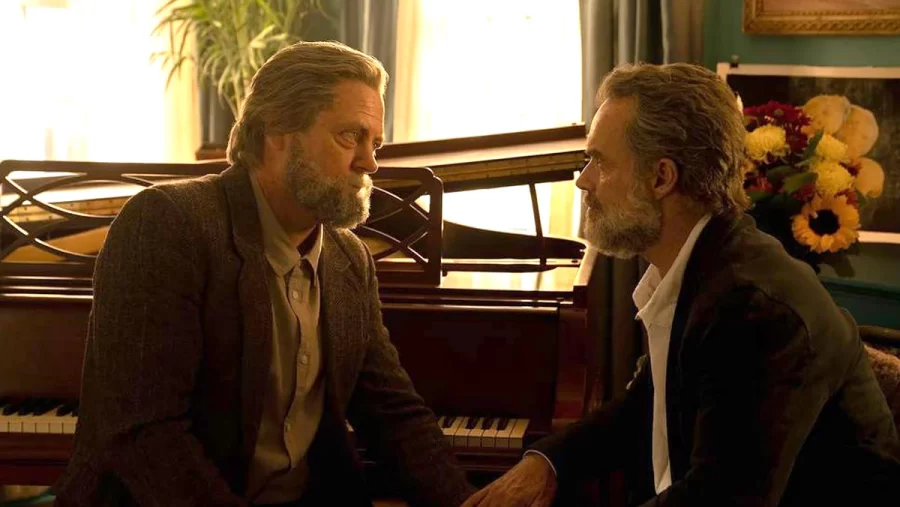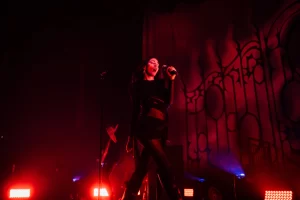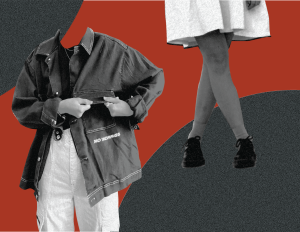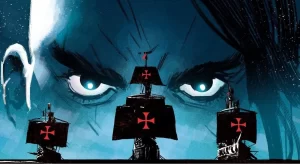Gay Love in the End Times: A ‘Last of Us’ Episode Three Retrospective
February 21, 2023
Queer joy versus queer trauma: it’s a fraught topic unfortunately nowadays. With countless examples of the “bury your gays” trope and countless decades of the queer community grasping on to queer-coded characters or any semblance of seeing ourselves in the media we consume, we are always holding our breath. Always savoring every last morsel of tender, genuine queer love on screen, waiting and anticipating the inevitable hat to drop.
We are used to seeing violence against the LGBTQ+ community enacted on screen, and even if there isn’t, stereotypes and shallow jokes at the behest of us are just as common. Luckily, things seem to slowly be getting better in terms of genuine portrayals of queer folks. Unfortunately, this change is not happening fast enough.
Episode three of “The Last of Us,” titled “Long, Long, Time” after the song of the same name by Linda Ronstadt, subverts the video game’s toxic and joyless gay love story by allowing the characters of Bill (Nick Offerman) and Frank (Murray Bartlett) to live long and beautifully fulfilling lives together.
Vulnerability and Strawberries
The biggest triumph in this episode’s story is that it shows an unapologetic depiction of queer love, albeit in one form. In a show that is so grim with violence and loss, the showrunners decided to intentionally make a detour to shine a light on unfettered queer romance in all its eccentricities and pains. The character of Bill is a perfect reflection of Joel (Pedro Pascal), but shows a vulnerable side to the fierce and hardened protector type. Whereas Joel has lost everything in his life, Bill decides to open his rugged little heart up, be vulnerable and truly live instead of just survive.
Bill is less interested in the small things and more interested in strengthening his defenses at the beginning. The apocalypse happening is like a fantasy for him, as it seems he’s been planning for it for most of his life. All it takes is the arrival and meeting of the charismatic Frank for all his walls to come crumbling down.
One of the most delightful things about seeing this relationship play out on screen is the fact that it departs pretty far from the source material in order to subvert the “bury your gays” trope. Although the aforementioned gays are “buried” at the end of the episode, their deaths are neither punishments for their sexuality nor plot points to further the storyline of a straight protagonist. They die peacefully and poetically, and only after we have watched them live full, happy lives, rejecting the trauma of the “bury your gays” trope. That’s the genius of this episode. Not only is this a genuinely human relationship being depicted, but it’s also a queer relationship that even homophobic viewers are forced to witness to make it to the end of the episode and see how things play out.
“Love Me How I Want to Be Loved”
To show queer love in this capacity unapologetically is simply groundbreaking for a television show of this caliber. Every aspect of this episode is operating at the highest level possible and it’s clear that a lot of thought went into it. For God’s sake, give the Emmy to Offerman, who is a theater trained actor, already.
This episode is among the best of this year’s television if not of all time. To showcase a queer relationship all the way through middle to old age, to show love in all of its facets both good and bad, is truly a feat worth savoring and cherishing. In a world full of violence, it’s the relationships we have with others and the love we hold for them that make life worth living.












Andre Montoya • Feb 22, 2023 at 4:15 pm
Hey Arlo, this was a very heartfelt article.
I also enjoyed this episode and I agree with you that either Offerman or Bartlett should receive some awards recognition.
I didn’t play the game myself but I know that some people took issue with not all of Bill’s storyline being adapted into the show. That’s a fair criticism I think since it criticizes how it was portrayed rather than what was portrayed. Still we have to deal with those that will dislike it for the usual reasons.
Regardless I’m glad you enjoyed the episode and that we got to have some honest representation for once.